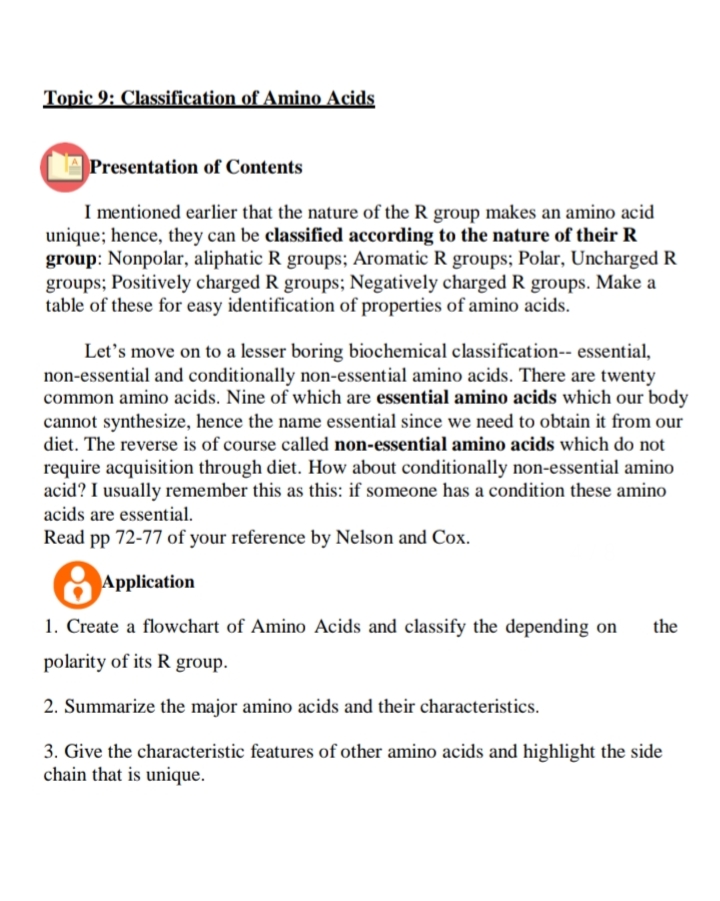Number 3 answer. I think its the amino acids that dont belong in 20 major amino acids. I hope you can help me. Thank you.
Number 3 answer. I think its the amino acids that dont belong in 20 major amino acids. I hope you can help me. Thank you.
Biochemistry
6th Edition
ISBN:9781305577206
Author:Reginald H. Garrett, Charles M. Grisham
Publisher:Reginald H. Garrett, Charles M. Grisham
Chapter30: Protein Synthesis
Section: Chapter Questions
Problem 19P
Related questions
Question
Number 3 answer. I think its the amino acids that dont belong in 20 major amino acids. I hope you can help me. Thank you.

Transcribed Image Text:Topic 9: Classification of Amino Acids
Presentation of Contents
I mentioned earlier that the nature of the R group makes an amino acid
unique; hence, they can be classified according to the nature of their R
group: Nonpolar, aliphatic R groups; Aromatic R groups; Polar, Uncharged R
groups; Positively charged R groups; Negatively charged R groups. Make a
table of these for easy identification of properties of amino acids.
Let's move on to a lesser boring biochemical classification-- essential,
non-essential and conditionally non-essential amino acids. There are twenty
common amino acids. Nine of which are essential amino acids which our body
cannot synthesize, hence the name essential since we need to obtain it from our
diet. The reverse is of course called non-essential amino acids which do not
require acquisition through diet. How about conditionally non-essential amino
acid? I usually remember this as this: if someone has a condition these amino
acids are essential.
Read pp 72-77 of your reference by Nelson and Cox.
Application
1. Create a flowchart of Amino Acids and classify the depending on
the
polarity of its R group.
2. Summarize the major amino acids and their characteristics.
3. Give the characteristic features of other amino acids and highlight the side
chain that is unique.
Expert Solution
This question has been solved!
Explore an expertly crafted, step-by-step solution for a thorough understanding of key concepts.
Step by step
Solved in 2 steps

Recommended textbooks for you

Biochemistry
Biochemistry
ISBN:
9781305577206
Author:
Reginald H. Garrett, Charles M. Grisham
Publisher:
Cengage Learning

Biology 2e
Biology
ISBN:
9781947172517
Author:
Matthew Douglas, Jung Choi, Mary Ann Clark
Publisher:
OpenStax

Biochemistry
Biochemistry
ISBN:
9781305577206
Author:
Reginald H. Garrett, Charles M. Grisham
Publisher:
Cengage Learning

Biology 2e
Biology
ISBN:
9781947172517
Author:
Matthew Douglas, Jung Choi, Mary Ann Clark
Publisher:
OpenStax